The construction of the wonderful canon of logarithms
The construction of the wonderful canon of logarithms
The construction of the wonderful canon of logarithms
You also want an ePaper? Increase the reach of your titles
YUMPU automatically turns print PDFs into web optimized ePapers that Google loves.
26 Construction <strong>of</strong> <strong>the</strong> Canon.<br />
ferences a c and e g equal, so that d placed in <strong>the</strong><br />
middle <strong>of</strong> c e is <strong>of</strong> necessity also placed in <strong>the</strong><br />
middle <strong>of</strong> a g. <strong>The</strong>n <strong>the</strong> sum <strong>of</strong> b c <strong>the</strong> second and<br />
b e <strong>the</strong> third is equal to <strong>the</strong> sum <strong>of</strong> b a <strong>the</strong> first<br />
and b g <strong>the</strong> fourth. For (by 37) <strong>the</strong> double <strong>of</strong><br />
b d, which is b f, is equal to b c and b e toge<strong>the</strong>r,<br />
because <strong>the</strong>ir differences from b d, namely c d and<br />
d e, are equal ; for <strong>the</strong> same reason <strong>the</strong> same b f<br />
is also equal to b a and b g toge<strong>the</strong>r, because <strong>the</strong>ir<br />
differences from b d, namely a d and d g, are also<br />
equal. Since, <strong>the</strong>refore, both <strong>the</strong> sum <strong>of</strong> b a and<br />
b g and <strong>the</strong> sum <strong>of</strong> b c and b e are equal to <strong>the</strong><br />
double <strong>of</strong> b d, which is b f, <strong>the</strong>refore also <strong>the</strong>y are<br />
equal to each o<strong>the</strong>r, which was to be proved.<br />
Whence follows <strong>the</strong> rule, <strong>of</strong> <strong>the</strong>se four <strong>logarithms</strong><br />
if you subtract a known mean from <strong>the</strong> sum <strong>of</strong> <strong>the</strong><br />
known extremes, <strong>the</strong>re is left <strong>the</strong> mean sought for;<br />
and if you subtract a known extreme from <strong>the</strong> sum<br />
<strong>of</strong> <strong>the</strong> known means, <strong>the</strong>re is left <strong>the</strong> extreme<br />
sought for.<br />
39. <strong>The</strong> difference <strong>of</strong><strong>the</strong> <strong>logarithms</strong> <strong>of</strong> two sines lies between<br />
two limits ; <strong>the</strong> greater limit being to radius as <strong>the</strong> difference<br />
<strong>of</strong> <strong>the</strong> sines to <strong>the</strong> less sine, and <strong>the</strong> less limit being<br />
to radius as <strong>the</strong> difference <strong>of</strong> <strong>the</strong> sines to <strong>the</strong> greater sine.<br />
V T c d e S<br />
Let T S be radius, d S <strong>the</strong> greater <strong>of</strong> two given<br />
sines, and e S <strong>the</strong> less. Beyond S T let <strong>the</strong> distance<br />
T V be marked <strong>of</strong>f by <strong>the</strong> point V, so that<br />
S T is to T V as e S, <strong>the</strong> less sine, is to d e, <strong>the</strong><br />
difference <strong>of</strong> <strong>the</strong> sines.<br />
"<strong>of</strong> T, towards S, let<br />
Again, on <strong>the</strong> o<strong>the</strong>r side<br />
<strong>the</strong> distance T c be marked<br />
<strong>of</strong>f by <strong>the</strong> point c, so that T S is to T c as d S,<br />
<strong>the</strong> greater sine, is to d e, tjie difference <strong>of</strong> <strong>the</strong><br />
sines


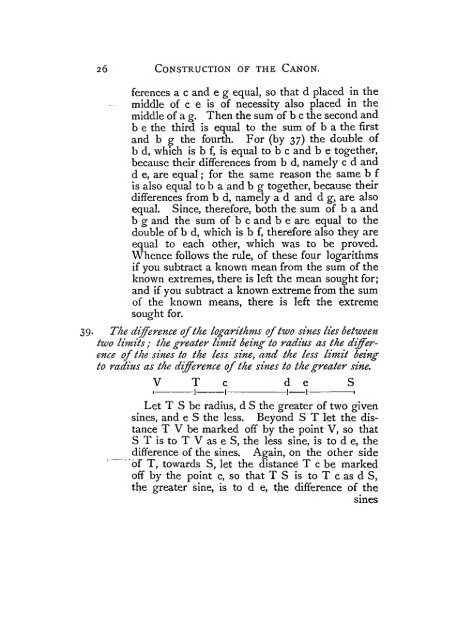
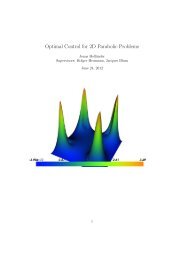
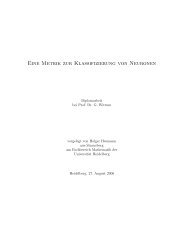
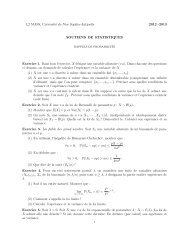
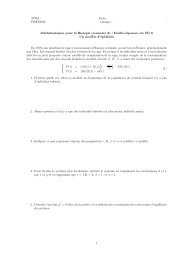


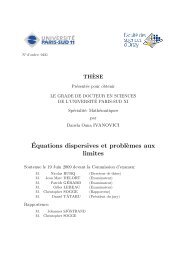
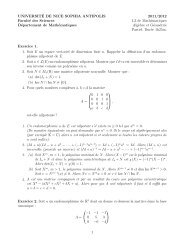
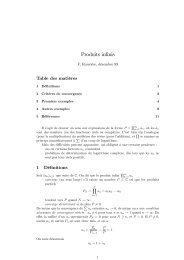
!['eries enti\`eres (+ [D78 Th d'Abel angulaire])](https://img.yumpu.com/14067031/1/184x260/eries-entieres-d78-th-dabel-angulaire.jpg?quality=85)

